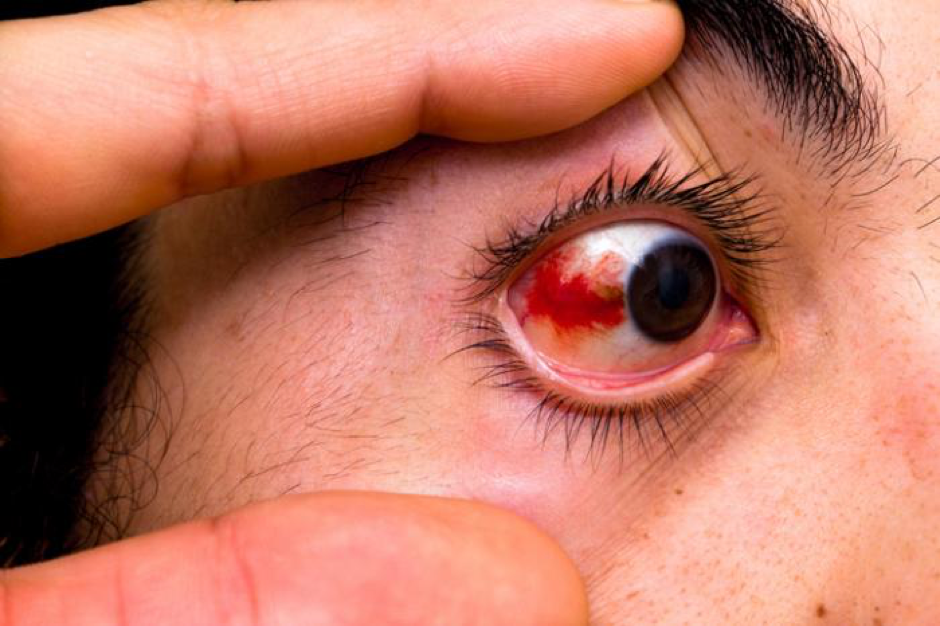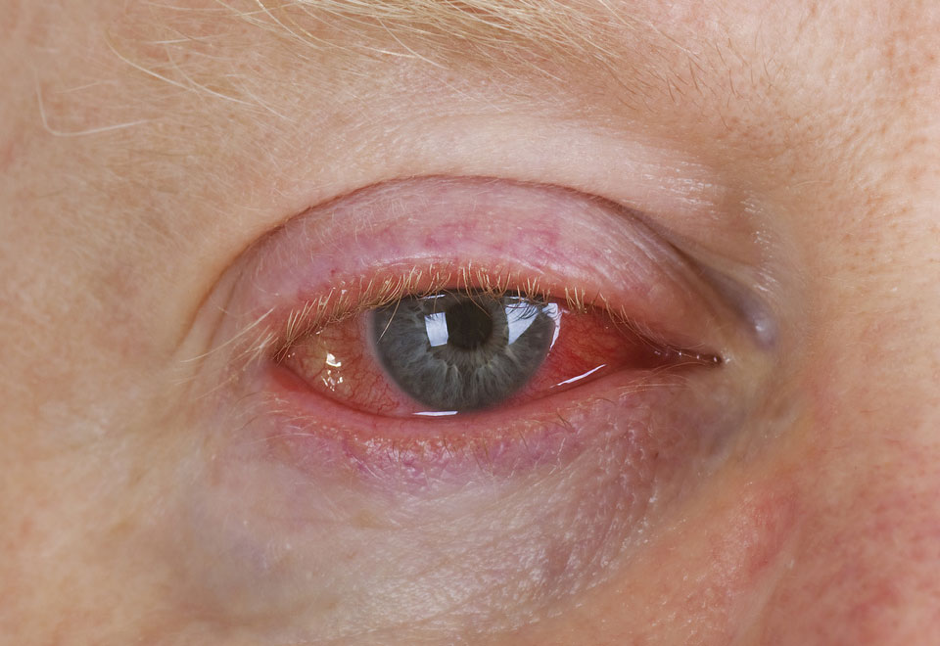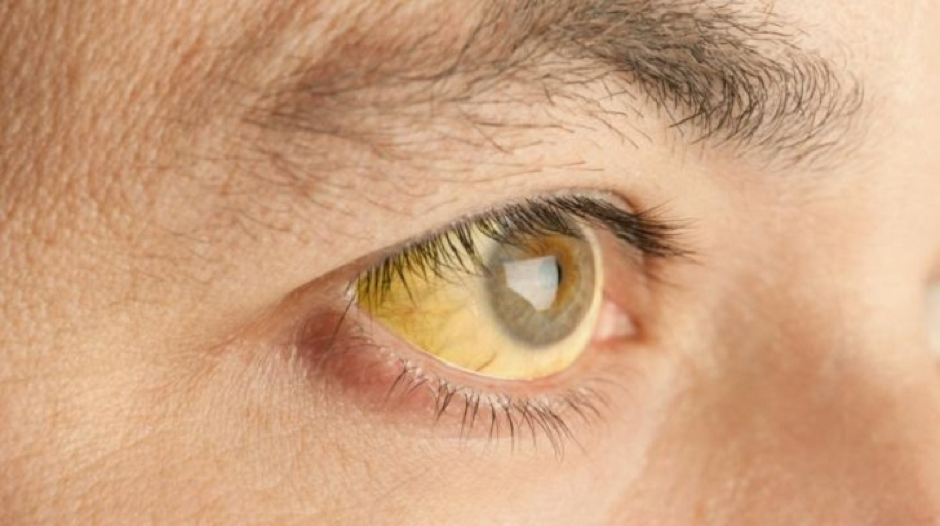The white of your eyes, medically referred to as the ‘sclera’, is the fibrous, protective, opaque, outer layer of the eyeball that consists of mainly collagen fiber and some amount of elastic fiber. Do you look in your mirror and found that the white of your eyes are red? Or yellow? Or Pink? In some cases a cold compress along with some anti allergic drugs are only required; whereas in other cases, you may need to see your physician and find out the cause.
What does the White of Your Eyes Say about Your Health?
In common cases, light read streaks in your eye whites can make your eyes look lifeless. It is mostly caused by lacking of sleep or just poor sleep quality. Get enough rest and sleep is enough to fix the condition, but you may need medical treatment in long-term insomnia. However, other health conditions can also make obvious changes in the whites of your eye:
Redness

The most common problem of the eye experienced by people is red eye. Redness in eye (in one eye or both eyes) accompanied by appearance of blood on the sclera or white of your eyes is usually due to a bruise or injury under the eye surface. It is called subconjunctival hemorrhage and it appears due to broken blood vessels in the conjunctiva (a thin tissue, which forms a covering on the sclera). There are generally no symptoms accompanied with a subconjunctival hemorrhage. The majority of subconjunctival hemorrhages clear in few weeks without treatment.
Subconjunctival hemorrhage may occur due to eye surgery, injury to eye, using contact lenses, using drugs that promotes bleeding or inhibits clotting such as warfarin (blood thinners) and diseases characterized by reduced platelet count or increased vascular fragility. Old age increases vascular fragility; hence, elderly people are at an increased risk of subconjunctival hemorrhage.
What does the white of your eyes say about your health? Redness in both eyes accompanied by itchiness and watering of eyes could be due to allergies. Other symptoms of allergies include sinus congestion, coughing, sneezing and runny nose. The trigger is usually airborne such as dust, animal dander or pollen. Allergy of the eyes can also be caused by certain ointments or cosmetic products. Some people have an allergy to the preservative present in an eye drop that is used for treating dry eyes. The usual treatment is to stay away from the trigger or the allergen. Use antihistamine eye drops or gel for the itchiness. OTC tears can retain the moisture in the eyes. If you are allergic to the preservative in the eye drops, search for a brand that is free from the preservative.
Visit your physician if you do not get relief within ten days.
Pinkeye

Redness of the white of the eye with itchy eyes and oozing of yellow or white discharge from the eyes is referred to as acute conjunctivitis and is viral in nature. It may last for one week to ten days. It may begin in one eye and then affect the other eye. Other symptoms are runny nose and symptoms of common cold such as cough, raw throat, sneezing, fatigue etc. It is very contagious; hence, wash your hands frequently and avoid sharing washcloths or towels.
To ease the symptoms of viral conjunctivitis do the following:
- Do not use makeup on your eyes.
- Take care to protect your eyes from irritating substances and dust and dirt.
- Don’t wear contact lenses while you are having the infection. Instead, wear eyeglasses.
- OTC ‘artificial tears’ may help in relieving burning and itching of the pinkeye. Avoid using same bottle of eye drops in a non-infected eye.
Certain medical conditions such as an infection of the eye or dry eye look very similar to pinkeye. Consult your physician to be sure about the illness.
Yellow whites of eyes

What does the white of your eyes say about your health? White of eyes turns yellowish in color due to jaundice in which there is excess bilirubin present in the blood. Jaundice occurs due to either excess production of bilirubin or prevention of its disposal from the liver. Some of the causes of jaundice are inflammation of liver, inflammation of bile duct, obstruction of bile duct, hemolytic anemia, cholestasis and Gilbert’s syndrome. Apart from yellowing of whites of the eyes, other symptoms of jaundice are yellow color of the skin, itching of the skin, fatigue, weight loss, vomiting, and pain in abdomen, fever, dark urine and pale color of stools.
There exist three main kinds of jaundice:
- Hemolytic jaundice: It occurs due to increased breakdown of RBC (red blood cells) resulting in increased production of the pigment bilirubin.
- Hepatocellular jaundice: It occurs due to injury or disease of the liver.
- Obstructive jaundice: It occurs due to obstruction present in the bile duct, which prevents the bilirubin to leave the liver.
Management of jaundice requires diagnosis of the cause to select appropriate treatment. Treatment is targeted towards the cause, instead of the jaundice. Jaundice caused due to anemia is treated by either eating foods rich in iron or consuming iron supplements. Jaundice caused by hepatitis is treated by taking steroid or anti-viral medicines. Jaundice caused by obstruction is treated by surgery to treat the obstruction.
What does the white of your eyes say about your health? Other causes of discoloration of sclera
- The sclera or white of the eye is thinner in children and some of the underlying eye pigment is reflected through it, which causes the sclera to appear slightly blue.
- In elderly individuals, fatty deposits may appear on the sclera, which may make its appearance slightly yellow.
- In very rare cases, severe liver failure and severe kidney failure may turn your sclera black.